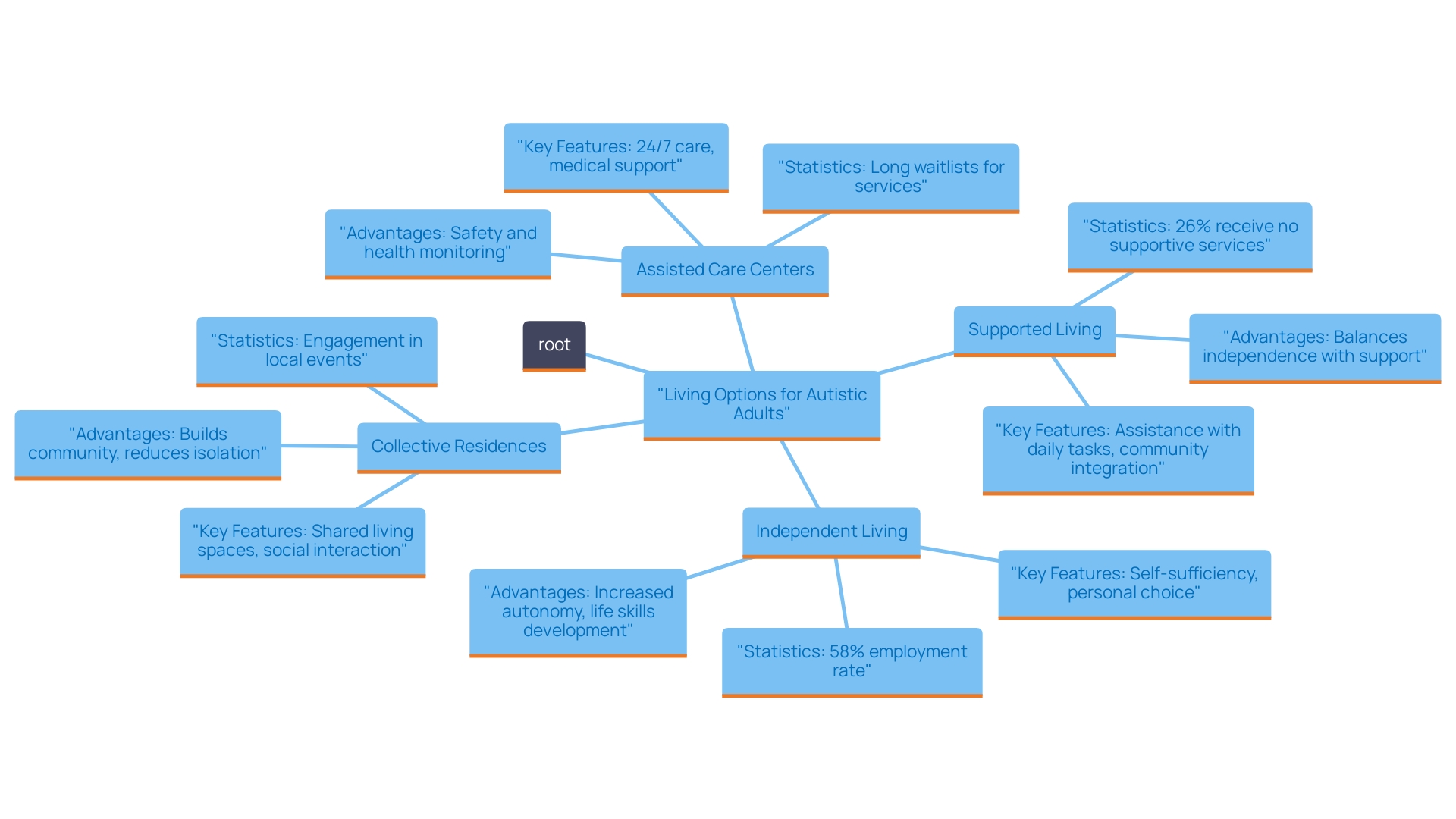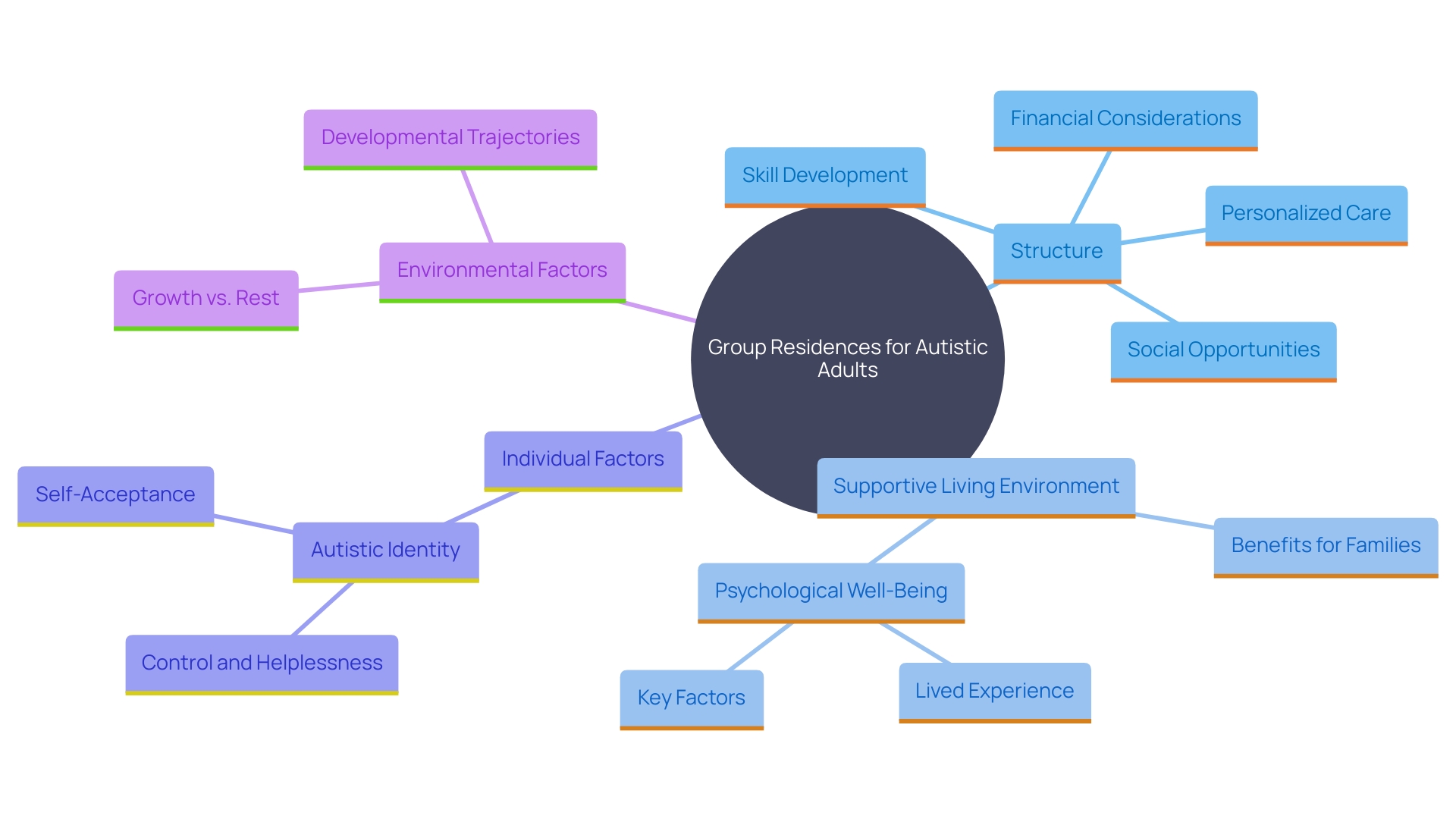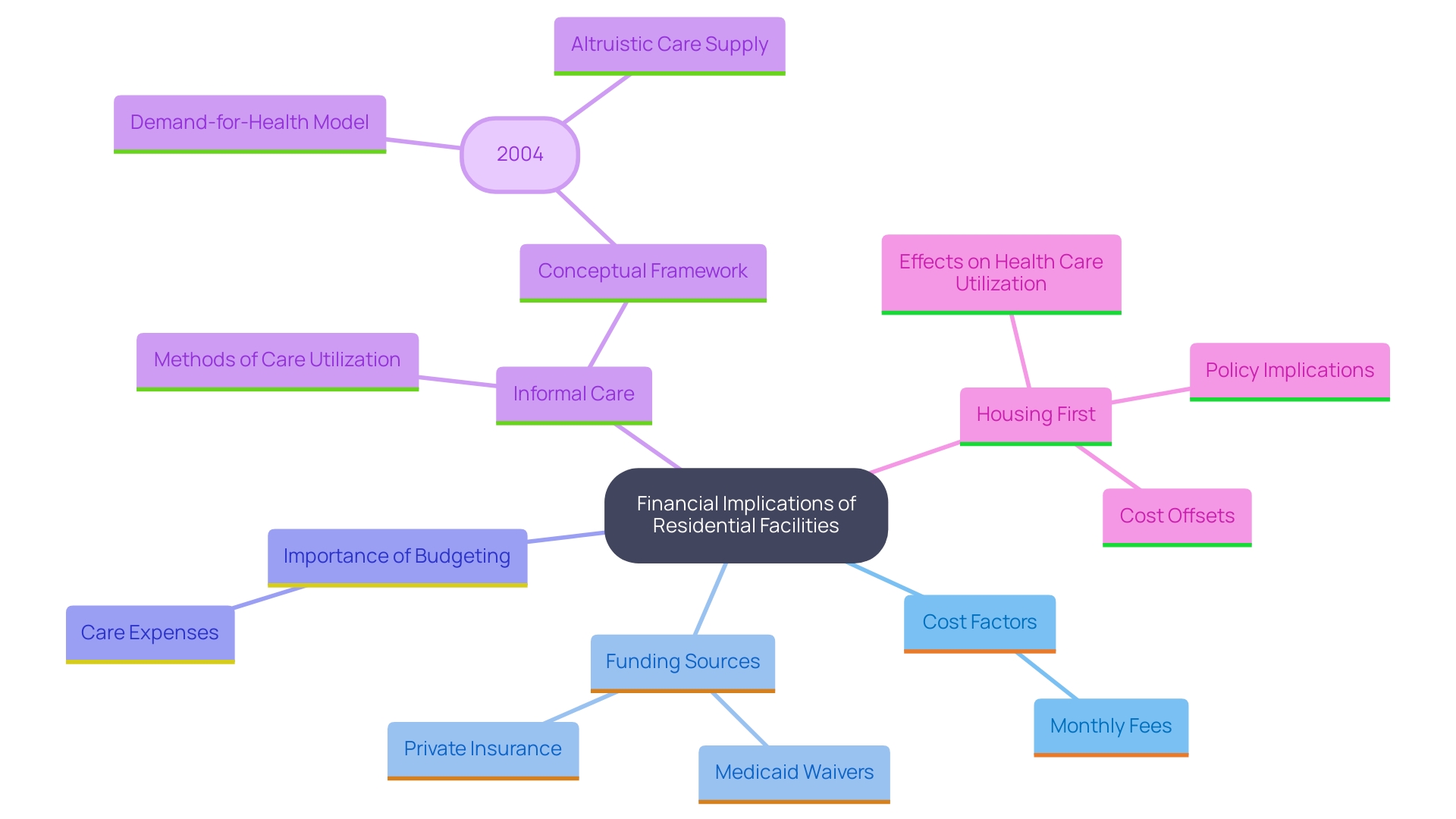Introduction
Navigating the living options available for autistic adults can be a complex and daunting task for families seeking the best care and support for their loved ones. Each choice, whether it be independent living, supported arrangements, group homes, or assisted living facilities, comes with its own set of advantages tailored to meet individual needs. Understanding these options is crucial, as it not only impacts the quality of life for autistic adults but also fosters their independence and personal growth.
With recent developments emphasizing the importance of inclusive environments, families are empowered to make informed decisions that align with their loved ones' aspirations and well-being. This article delves into the various living arrangements, exploring their unique features, benefits, and financial implications, equipping families with the knowledge they need to support their loved ones on their journey to a fulfilling life.
Exploring Living Options for Autistic Adults
When considering living options for autistic adults, it's crucial to evaluate the various alternatives available to find the best fit for your loved one:
-
Independent Living: For some adults with autism, independent living can be a fulfilling option. They handle their own household with minimal assistance, fostering autonomy and self-reliance. Careful planning and a robust support system are vital to ensure success in this setting. Recent statistics indicate that approximately 35% of autistic adults are currently thriving in independent circumstances, reflecting a growing trend towards autonomy.
-
Supported Living: This model empowers individuals to live in their own homes while receiving necessary assistance with daily tasks and community engagement. Assisted residing strikes a balance between independence and safety, providing customized assistance that promotes personal growth and community involvement. In 2024, approximately 45% of individuals in assisted arrangements reported high satisfaction levels with their independence and support received.
-
Collective Residences: Created to furnish a nurturing setting, collective residences provide shared living spaces and staff support. This arrangement promotes social interaction and the development of daily skills, making it a beneficial option for many. Research indicates that individuals residing in group homes have reported a 50% improvement in social interactions and overall quality of life. The WHO resolution emphasizes the importance of such environments in enhancing the well-being of individuals with autism.
-
Assisted Care Centers: Merging independent residence with healthcare support, assisted care centers serve those requiring additional medical assistance. This option ensures that medical needs are met while allowing for a degree of independence. Recent data indicates that approximately 30% of autistic adults in assisted housing facilities receive the medical care they need without compromising their independence.
Recent developments, such as the World Health Organization's 2014 resolution, highlight the global commitment to enhancing the quality of life for individuals with autism. This resolution aims to strengthen national capacities and promote inclusive environments, which directly connects to the options available for autistic individuals today.
Each option has its unique advantages and challenges. By understanding these, you can make an informed decision that best supports the well-being and independence of your loved one.

Understanding Group Homes: A Viable Option for Autistic Adults
Group residences for autistic adults provide a supportive communal living environment, tailored to meet varying levels of need. Understanding the key aspects of these residences can help families make informed decisions.
-
Structure: Typically, group residences accommodate a small number of residents, enabling personalized care and attention. Dedicated staff members assist with daily activities, social skills development, and community engagement, ensuring residents receive the support they need.
-
Social Opportunities: These residences provide a platform for enhanced social interaction among residents. Living in such an environment fosters friendships and a strong sense of community that might be challenging to achieve in independent living situations. Recent reports highlight the positive impact of these social opportunities on residents' overall well-being. For example, a case study of a residential facility in [Location] demonstrated that inhabitants developed enduring friendships, engaging in weekly game nights and community gatherings.
-
Skill Development: A significant focus in group settings is on helping residents develop essential life skills. From cooking and budgeting to organizing daily tasks, these skills promote greater independence over time. Success stories have shown remarkable personal growth in residents who have embraced these opportunities. For example, one resident learned to manage their own finances after participating in the budgeting workshops, leading to increased confidence and self-sufficiency.
-
Personalized Care: Group residences provide different levels of assistance, customized to the unique requirements of each resident. This customization allows families to find the best fit for their loved ones, ensuring they receive appropriate care and support.
According to recent statistics, the yearly expense of residing in a shared facility for autistic adults ranges from $60,000 to $120,000, with an average of $77,750 for full-time assistance. These financial considerations are crucial for families planning long-term care. To put this into perspective, families might weigh the cost of group facilities against private care options, which can often be less personalized but may also be more expensive in the long run. Ruben Kesherim observes, 'These government initiatives not only assist the educational needs of individuals with autism but also contribute towards their overall development and growth within the community.'
Group facilities are not merely residences but environments that blend support, community, and opportunities for personal growth, making them a valuable option for many autistic adults.

Financial Implications of Group Homes for Autistic Adults
Comprehending the financial consequences of residential facilities is essential for making informed choices regarding your loved one's care. Various factors, such as location, services provided, and the level of care required, can significantly impact costs. Here are essential considerations:
-
Cost Factors: Monthly fees for group homes can vary widely, typically ranging from $2,500 to $6,500 in 2024 for individuals with autism. These fees often cover room and board, staff support, and access to activities. It's important to assess what services are included to fully understand the financial commitment.
-
Funding Sources: There are several funding options available to help offset the costs of group home living:
- Medicaid Waivers: Many states offer Medicaid waivers that cover some living expenses for individuals with disabilities. These waivers can significantly reduce out-of-pocket costs.
- State and Local Programs: Some states offer financial aid programs or subsidies for collective living arrangements. It's worth exploring these options to see what's available in your area.
-
Private Insurance: Check with your insurance provider to determine if they cover any aspects of community living. Some plans may offer partial coverage for specific services.
-
Budgeting for Care: Creating a detailed financial plan is essential. Evaluate your financial situation carefully and consider long-term budgeting for your loved one's care. This proactive approach can help alleviate some of the pressures associated with unexpected costs.
Real-world examples highlight the importance of staying informed about the latest developments. Recently, the VA transitioned to direct deposit for PCAFC stipends, ensuring timely payments for caregivers. This change not only streamlines the payment process but also emphasizes the necessity for caregivers to remain updated on policies that may affect their financial planning.
By understanding the financial landscape and exploring various funding options, you can better prepare for the costs associated with group homes. This knowledge empowers you to make sustainable and informed decisions for your child's well-being.

Conclusion
Exploring living options for autistic adults reveals a spectrum of choices that cater to varying needs and preferences. Independent living fosters autonomy, supported living strikes a balance between independence and assistance, group homes create a community atmosphere for socialization and skill development, and assisted living facilities provide essential medical support while preserving independence. Each option offers unique advantages and challenges, underscoring the importance of understanding individual circumstances to make informed decisions.
With recent developments emphasizing the significance of inclusive environments and tailored support, families are better equipped to navigate these choices. The financial implications associated with group homes and other living arrangements are crucial to consider, as they directly impact long-term planning and care. By leveraging available funding sources and resources, families can alleviate financial burdens and ensure their loved ones receive the support they need.
Ultimately, the goal is to empower autistic adults to lead fulfilling lives that align with their aspirations. By carefully evaluating the various living options and making informed choices, families can promote independence, personal growth, and overall well-being for their loved ones. The journey may be complex, but with the right knowledge and support, it is possible to create a nurturing environment that fosters a brighter future.




